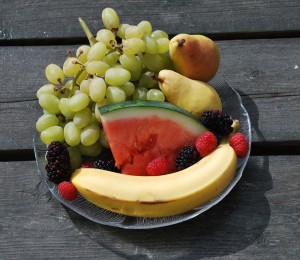 Why I'm a Lawyer and not a Food Stylist
Why I'm a Lawyer and not a Food Stylist
I am attending a weekend yoga retreat in the Berkshires where, among other things, I learn about the glories of healthy eating. And let me tell you this: it’s not just about the food.
One lunch hour, I serve myself a generous helping of turkey meatloaf and wild rice pilaf from the buffet then look for a place to sit among the long rows of tables. I choose a spot where a man and woman sit quietly together and sit down diagonally opposite them. I don’t want to invade their space though I would welcome conversation.
As I settle in with my cutlery, the man closes his eyes, chews slowly, then pauses. I stare at him, then realizing my rudeness, I quickly look down at my own plate. Mindful eating, I think, bringing to mind raisins and John Kabat-Zinn. I wonder if he is in silence, a practice of not engaging in conversation while in retreat. He opens his eyes and I smile at him.
“Delicious,” he says.
“It looks to be,” I say, relieved to be able to speak. “I am just grateful not to be the one who cooked it.”
Samuel (not his real name) is a palliative doctor from New Hampshire. In his sixties, he wears wire-frame glasses and has grey hair that reaches his collar. His face is kind and deeply wrinkled. His table companion, Anna, is a yoga teacher at the centre. I ask Samuel what brought him here.
“How can I treat my patients mindfully if I am not mindful of myself?” he asks, grinning. I am struck with an image of him at the bedside of his patients, an angel in disguise. Samuel has been taking a cooking class during his stay. He tells us about the herbs and spices in our meal. Mustard seed. Fennel. Basil. He is clearly knowledgeable about food.
“I do all the cooking at home,” he tells us. For a wife, I am guessing. If he has children, surely they would be grown up and living on their own.
“I am trying to eat mindfully,” he says. “I try to eat three mindful bites each meal. I almost always fail.” He describes the process to us.
“First, you must breathe,” he says. “This sounds obvious, but it’s not. We all tend to shallow breathing, to disconnecting from this necessity of life.” He puts a hand over his heart.
A mindful breath before taking a bite of food makes perfect sense. I’d never thought of this before, and listen intently to what he says next.
“Then look at the food, appreciate it. Consider where it came from.” I look at his plate, see fall vegetable lasagna and quinoa salad. I barely know what quinoa is, let alone where it came from.
Samuel continues: “Say a blessing, a prayer. Give a gesture of appreciation. Smell it. Raise it to your mouth with care. Then enjoy its texture before chewing.” He smiles. “Easier said than done.”
Don’t I know it. My daughters and I invented our own mindful eating process – granted we didn’t call it that – in an effort to slow down our rapid-fire eating habits. Mostly it just made us laugh. It went like this: Choose. Cut. Spear (or otherwise gather). Pause. Consider (which would entail looking thoughtfully at the morsel on the fork.) Deliver morsel to mouth. Chew. Swallow. Put your fork down. More like a conveyor belt than a truly mindful regimen. In the ordinary course, we stab our food, rush it to our mouths, chew twice while stabbing the next bite, then swallow while simultaneously raising the fork again.
“Do you chew a certain number of times?” Anna asks.
“No, “Samuel answers, “I just try to do it slowly. And sometimes, I abbreviate the whole process. Taste it. Savour it. Give thanks after you swallow.” Abbreviated mindful eating.
I dwell on the word slowly. I eat like a steam engine, barely pausing to breathe. I often eat standing up, occasionally leaning over the sink depending on the relative messiness of the meal (for a peach or melon, day). Always in a rush to chase away the hunger pangs and get on to a more productive activity. Sometimes I don’t even stop moving. I will march down the hall to the laundry room to move a load from washer to dryer, chewing every step of the way. Not tasting a thing.
It is a wonder that I haven’t choked.
“What is the most important ingredient in a dish?” Samuel asks.
“Love?” I answer, with no idea where that idea came from. Perhaps it’s just the atmosphere here.
“You got it,” he says, clearly delighted.
I pump a fist in the air, then feel embarrassed for being such an obvious approval-junkie. Oh well, at least I’m a well-fed approval junkie, and if not mindful of my food, at least I’m learning how.
Bon appétit! Or should I say mindful appétit?